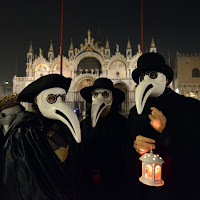I talk about characters here a lot. A real lot, going off the size of that tag over in the cloud on the right. Are the clouds even a thing anymore?
Anyway…
While I’ve talked a bunch of times about the traits of good characters, I don’t think I’ve really talked as much about how to get these traits across in a story. It’s all fine and good to say someone needs to be likable, but does that just mean I should have them shout “Like me, please like me!” up at the sky? How do I get across the kind of person Wakko is without falling back on him rattling off his resume and dating history?
I think most of the ways we establish characters tend to fall into three broad groups.
First is the easiest one—my characters establish themselves through their own words and actions. We’ve talked a bunch of times about the importance of voice, how someone talks and what they tend to talk about. If all Phoebe ever talks about is work, that tells us something about her. Likewise, if every conversation she has leads to talking about sex, that gives us a different insight. If every time she speaks it sounds like her Adderall just kicked in, that implies something about her, just like it does if every conversation tends to center on her and how great she is. Heck, even if someone doesn’t talk much—or maybe chooses to barely ever talk—that’s them telling us something about themselves.
In a similar way, if I show Wakko shooing away a stray dog, it says something about him. It says it a little louder if he throws something at the dog or shouts at it. And of course, if I see Wakko have a really crappy day at work and then he goes home to his crappy apartment and heads back out to give the stray a plate of dog food… that can say a lot about what kind of person he is. Good people do good things, bad people do bad things.
The second way we establish characters is by how other characters talk about them and react to them. If Phoebe’s talking in a calm, measured voice but her employees are nervous—or even terrified—that’s a big clue in to what kind of person they know she is. Likewise, if she’s trying to ream someone out over their poor job performance and they’re ignoring her, that also tells us something. Heck, if I’ve got multiple POVs, I might decide to show a bunch of her employees at the bar after work, and they might have a lot more to say once they’re out of the office. Until Phoebe walks in, anyway, and then their tone might change really fast… which again, tells us something about Phoebe.
It’s worth pointing out that most of the time my characters are going to know each other better than my audience knows them. So these interactions are going to work on a couple levels. They’re probably going to hint at how much history there is between characters, what that history’s like, what their current relationship is like. This is where I can use a lot of subtext and let my audience read between the lines a lot. People love that. Seriously.
The third way is how my character’s words and actions line up with my reader’s personal experience. You’ve probably heard that old adage, “actions speak louder than words.” If I tell you this is the smartest guy you’ll ever meet, but then constantly show him being outmatched and outsmarted… what does it actually say about this guy? Up above I mentioned Phoebe turning every conversation to sex? What does it say if she does it constantly at clubs and parties, but then we see her go home sad and alone every night? On the flipside, if she talks all the time about how she’s a bit of a conservative prude and very old fashioned, but then every other night we see her take someone new back to her place, that’s telling us something, too. And if the guy she’s chatting up at the bar talks about how much he loves animals, but then we see him throw a bottle at that stray dog on the way back to her place… well, we get a much better sense of who he is.
This sort of contrast (or open contradiction), can be a great way to get across those character traits. It can let us see who someone thinks they are versus who they actually are. It can show us who they want to be versus who they tend to be. Maybe even show us who someone really is as opposed to the person they keep trying to tell everyone they are.
That’s what I’ve got off the top of my head. If you’ve got some other ways to get character traits across to your readers, please let me know.
And next time is Halloween! And then NaNoWriMo. And then who knows what…
Until then, go write.










